NYC Fluid Retail: Hospitality Edition
New York Market Week and NYCxDESIGN are fast approaching and as retail continues to rapidly transform, we’re looking beyond the immediate industry, to environments and concepts inspiring the retail of tomorrow. Today’s consumers engage with brands in a fluid manner, the traditional sectors of the retail, restaurant, hospitality, and entertainment have blurred as the consumer-desired experience has become a mosaic of expectations, influenced heavily by engagement, access, and authenticity. Embracing these new expectations presents brands with a greater opportunity to differentiate, cross-sell and expand the breadth of their brand experience. So, this year while in the city we’ll be exploring some of the city’s most innovative new concepts across multiple industries, that we think could be a driving force in the retail experience of the future.
Our first #FluidRetail post featured Food + Beverage, while this next segment will focus on Hospitality + Wellness concepts, with more markets showcased in the coming weeks. Below you will find the best spots in and around NYC to stay, work, relax, or simply indulge in some self-care.
Sister City NYC | Lower East Side Hotel
Described as an “experiment in essentialism”, Sister City is a newly opened hotel touting the “lean luxury” trend. The hotel has taken inspiration from minimalists and “functional perfection of Finnish saunas, Japanese bento boxes, rock-cut cliff dwellings of prehistory.”
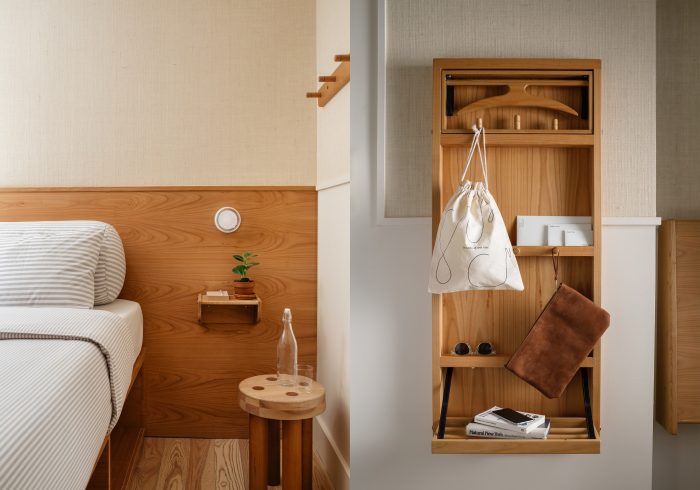
Chill House NYC | East Village Salon + Coffee Shop
Chill House is a coffee shop, nail salon, and massage boutique all in one. The space’s cool-vibe aesthetic makes this the perfect spot to treat yourself to some self-care and grab a gourmet cup of joe. One can come in for a single visit or purchase a membership plan offering exclusive discounts and products.

3DEN | Co-Working In Hudson Yards
This new concept located at Hudson Yards offers work spaces, Casper nap pods, showers, a meditation room, soundproof phone booths, and coffee and snacks in a spacious, plant-filled. Visiting 3DEN can be done through the company’s app where users can see what available or how crowded the space it.
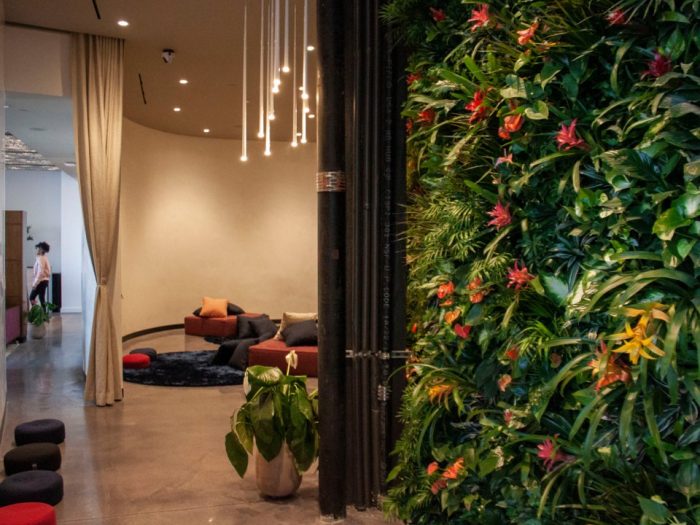
Rise By We | FIDI Gym
WeWork’s first ever gym location opens in NYC. The concept is available for WeWork and non-WeWork members. Featuring everything you’d expect in a gym; the space’s color palette is muted with black and light wood finishes and splashes of greenery.
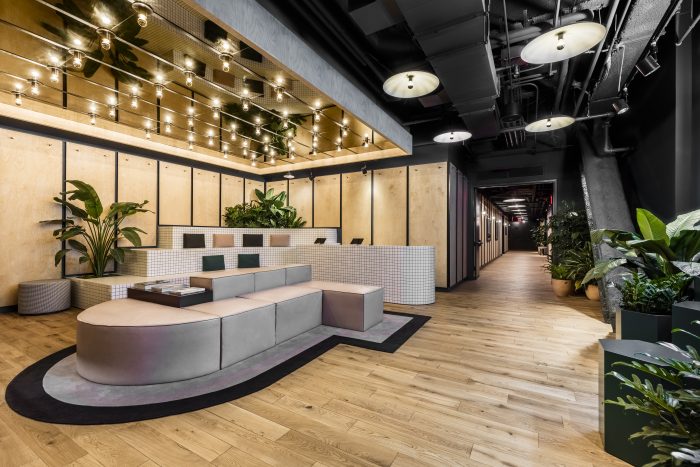
The Refinery | Mid-Town Hotel
Refinery Hotel is a reinterpretation of the Colony Arcade—a former hat factory and Prohibition-era tea room. Each room has been transformed into a stylish loft room with high ceilings and luxury accents. The Refinery Rooftop is the hotels crowning jewel with inspiring views of the Manhattan skyline and Empire State Building.
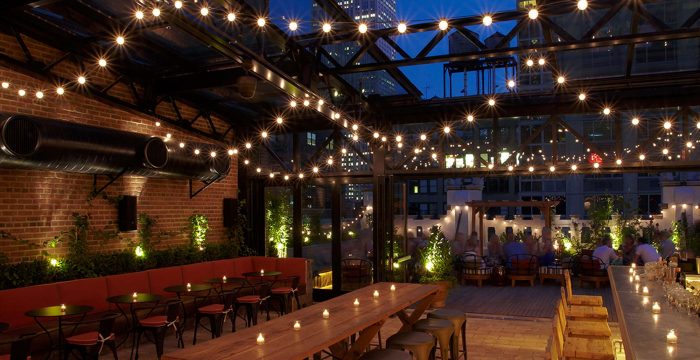
Greenery Unlimited | Brooklyn Biophelia
Plant stores are having a big moment and Greenery Unlimited located in Greenpoint, Brooklyn was modeled after biologist Edward O. Wilson’s theory of biophilia, which suggests that humans feel better and are healthier when surrounded by natural life. At this store, you’re encouraged to sit back, relax, and maybe buy a new plant.
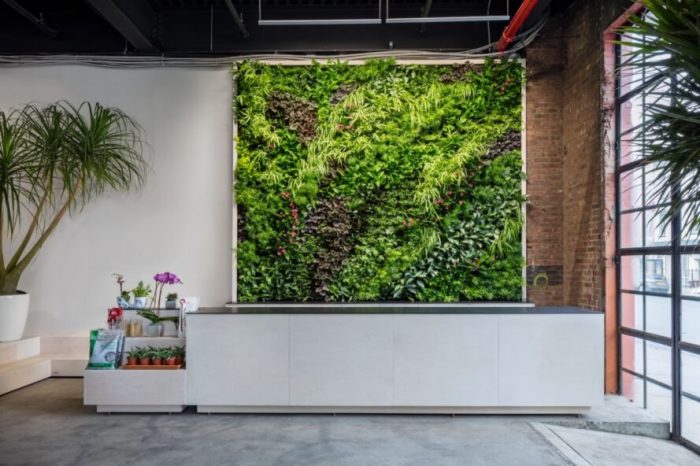
The Assemblage Nomad | FIDI Extended Stay + Co-Working
The Assemblage located in FIDI is a unique property offering a co-working space and flexible extended stay booking that takes a spiritual approach by providing visitors a holistic, ayurvedic, work-play-live space.
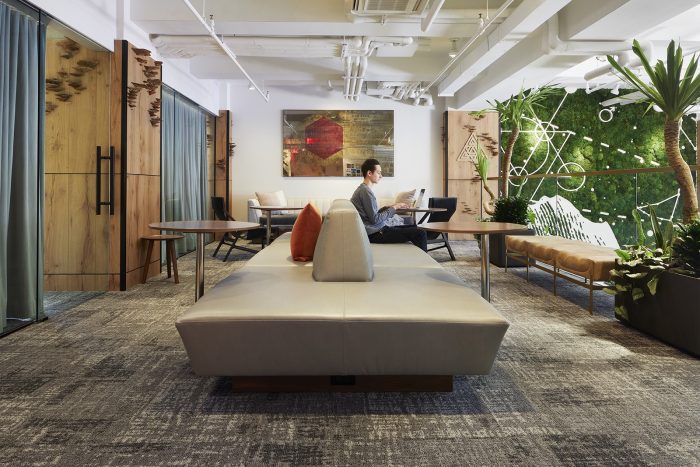
Recreation At The Moxy | Downtown Hotel
The Moxy Hotel in downtown NYC introduces a new concept featuring a co-working space by day and a cocktail lounge with a basketball court by night. The concept taps into Moxy’s play-and-games ethos and creates a hospitality hub that can cater to a variety of needs.
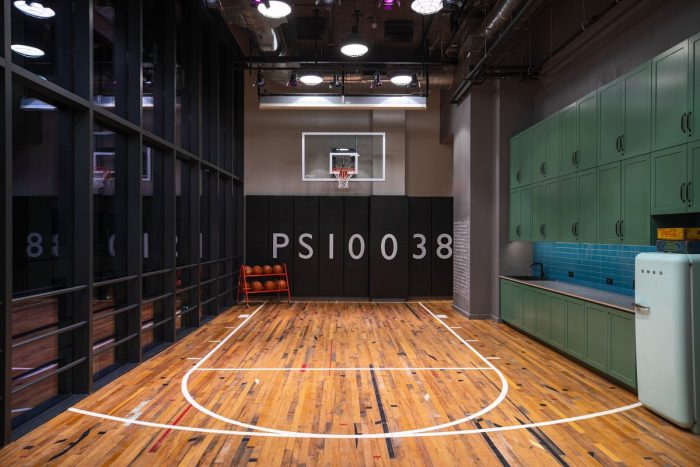
Recess CBD | NOHO Pop-Up
CBD company Recess has opened a pop-up experience in NOHO inviting visitors to step into a laid-back, neon-filled shop space that serves the brands sparkling water infused with hemp extract. The idea is to draw people into the space to learn more about the brand and relax.
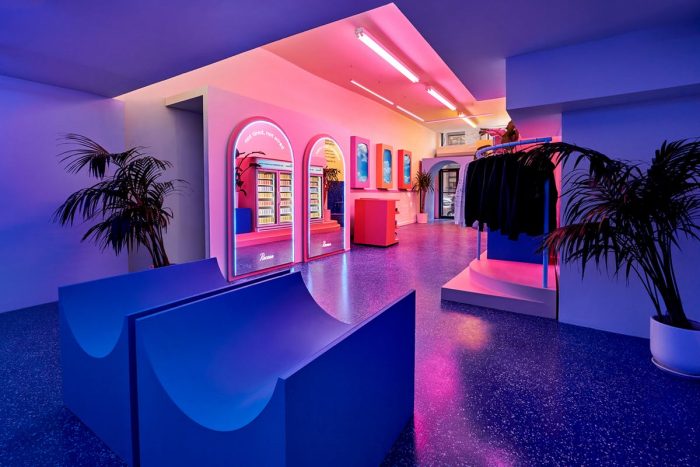
Why Now Might Actually Be The Best Time To Sign A Long-Term Office Lease
“Let’s sit down and sign a contract. It will last for 10 years, and it will cost you hundreds of thousands of dollars, if not millions. What you’ll get out of the deal will be an office. Yes, an office: the physical real estate that was deemed unsafe by the pandemic, and which continues to be an uncertain space for human use. The remote work of the lockdown days has evolved, post-pandemic, into here-today-gone-tomorrow hybrid work. As a result, office spaces are often occupied only some of the time, and in some cities they are virtual ghost towns, stacked in vertical ghost buildings, filling ghost blocks.
With high vacancy and low demand, the debts coming due on many of these buildings may simply be unpayable. But office spaces in general are not dead.” (Fast Company)
Haril Pandya, Principal and National Practice Leader, Asset Strategy, shares why it’s a good time to be a tenant with Fast Company.
Architecture Spotlight: Mark Levine
At NELSON, we believe architecture has the power to create a transformative sense of place, supporting communities and strengthening the fabric of cities across the nation and around the world. Recently named the #2 fastest growing architecture firm, we’re celebrating our growth, people, and projects that are boldly transforming architecture. To do so, we’ve created our latest series, “Architecture Spotlight” to introduce you to a few thought leaders within the NELSON Architecture Team. You’ll not only get an exclusive look at our people but hear what’s in store for the future.
This week we interview Mark Levine, AIA, Managing VP of NELSON Los Angeles. Keep reading to learn more about his career, point-of-view, and what he think is next for the architecture industry.
Q: What is your role at NELSON and how long have you been an architect?
A: At NELSON, I am the Managing Vice President working out of our Los Angeles office. Currently, I am leading design teams through master planning, retail prototype development, domestic and international retail programs, and various retail mixed-use and commercial projects in the Western Region. I’ve been a practicing designer/architect for 24 years and hold memberships in ICSC and ULI.
Q: What is your favorite architecture trend of today?
A: I enjoy today’s trends in visualization. Our profession is predicated on communicating the built environment. What got me into architecture at a young age was the art of architectural drawings, renderings, construction drawings, sections, axons, etc. Each year, visualization advances even more with VR, AR, and 3-D modeling. I’m excited by the possibility of infusing tools with the same sense of artistry as a hand sketch.
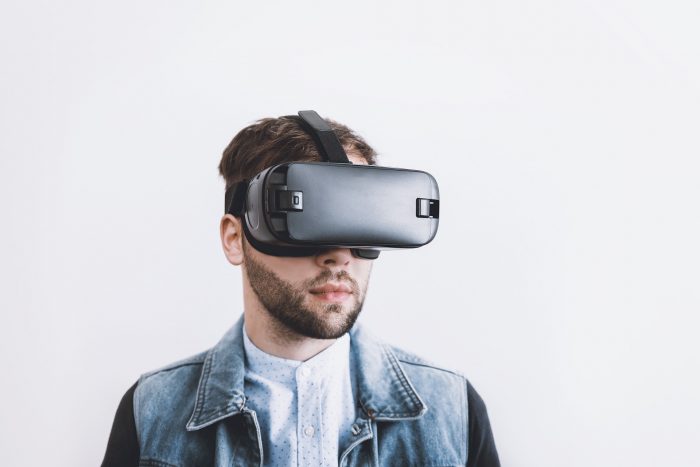
Q: What advice would you give a young architect?
A: My advice for any young, aspiring architect is to always work on expanding the boundary of your interests. Just because you are an architect doesn’t me those passions can’t be paired with another. Taking things even further, I advise any young professional to simply read something out of their element. For example, if technology is your thing take a break to read an article about literature or commerce occasionally. It’s the connections we make with seemingly unassociated ideas that can have a tremendous and impact spark a new sense of creativity.
Q: What do you think the future holds for architecture?
A: Architecture is one of the oldest professions. The tools, methods, aesthetics, and styles have gradually changed with time, but our aspirations are rooted in the fundamentals of humanity. Architecture will continue to evolve in the future as an ever-changing practice. With that in mind, architects should always be aware of these aspirations and reflect these in the design and execution of our work.
Q: What is the biggest challenge the architecture industry faces today?
A: The biggest challenge for architecture is understanding, responding and reflecting within changing industries. Today humans fluidly interact with environments, meaning that one space is expected to do many things. For example, malls/retail centers are longer just a place to shop. These types of experiences have shifted to retail mixed-use environments that blur the lines of retail, hospitality, and entertainment. Today’s consumers think less in channels turning toward environments that solve a need or cater to desires.
Q: What sets NELSON apart from other architecture firms?
A: I think it’s the immense effort undertaken by the entirety of the firm to improve and become better is what makes this company so special. At NELSON, we are constantly changing, evolving, and growing. This has proven that the company is always up for a challenge that will make us stronger.
Our Return to the Great Outdoors: Fueling the Outdoor Lifestyle
From retail destinations, office amenities, new services, and sustainable design, we’re seeing a surge in the desire to reconnect with the great outdoors across every consumer-facing environment. In our latest series, Our Return to the Great Outdoors we’ll share how brands can embrace this trend to create both safe and memorable outdoor experiences that will resonate with consumers long after COVID-19 fades.
In times of uncertainty, consumer expectations don’t change completely—they simply evolve, pivot and accelerate, raising the bar and amplifying the demand for new, relevant experiences. In 2020, a major shift in consumer behaviors welcomed an uptick in outdoor recreation. With health in mind and a new appreciation for wide open spaces, consumers and developers have turned their focus to sustainable environments that are connected to nature. In the third and final part of this series, we’ll be exploring elements that enhance this connection through amenities, services, or new standards:
Outdoor Activities
According to Outdoor Industry Association, Americans have flocked to outdoor recreation amid COVID-19 restrictions limiting indoor experiences. Across the country, hiking and camping sites have reported their busiest months in years, and according to the N.P.D Group, the sales of leisure bikes have jumped 121 percent. With this at play, it seems active, outdoor lifestyles are here to stay. There are many ways brands and businesses across all sectors can create environments that this complement trend including adding bike repair shops and storage to properties or introducing outdoor focused products/services.
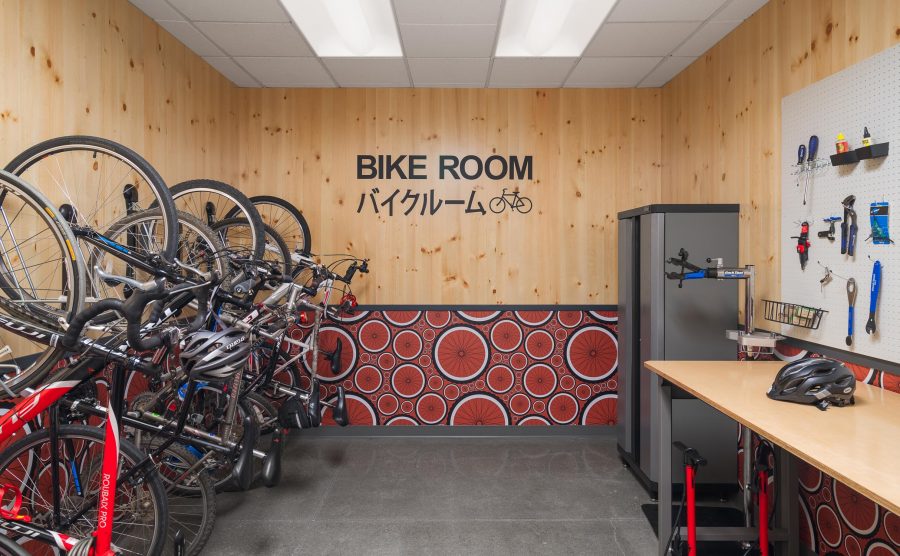
Seasonal Solutions
As the seasons change and COVID-19 remains, brands and business will have to adjust to new weather. Even with safety concerns, many consumers will want to continue shopping in-store, dining out, and enjoying the outdoors. For restaurants, outdoor spaces will have to be winterized and property managers will have to develop outdoor amenities that that support year-round engagement (e.g. Astroturf, outdoor fire pits, or green space that can be a pop-up playground in the summer and an ice rink in the winter).
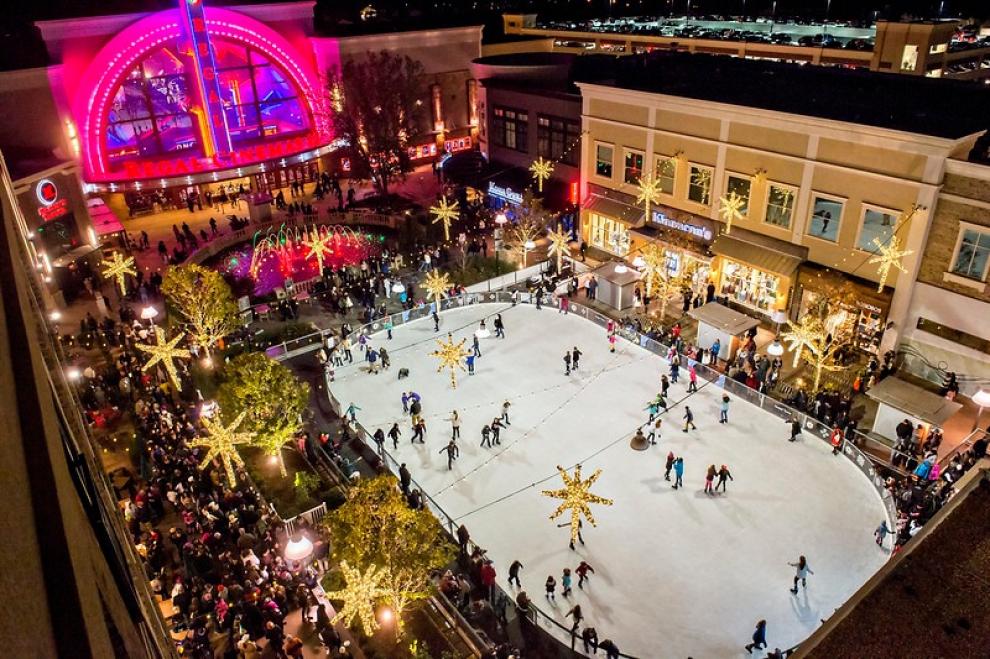
Simulating the Senses
Even for completely indoor environments, there are many ways the outdoors can be brought inside to cater to consumers new found appreciation of nature. This can be accomplished by:
- Adding sound machines, greenery, and natural materials to a space, whether it is part of a shopping, living, or working environment
- Creating environments that have greater access to natural light or easy access to the outdoors via doors and functional windows
- Prioritizing WELL-Certified environments to build more sustainable spaces that promote overall health and wellbeing
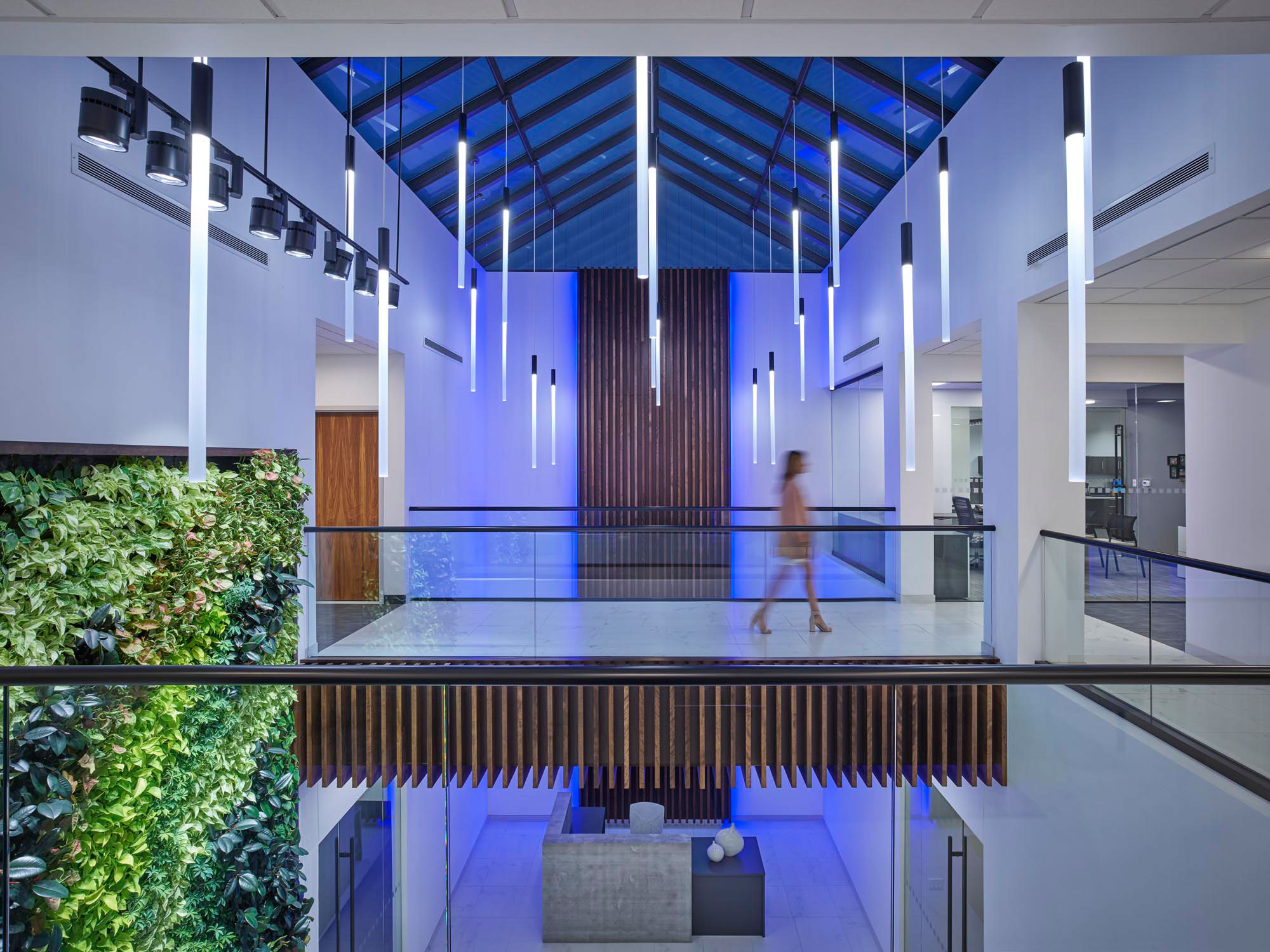
AIS Headquarters
Overall, consumer behaviors prove that outdoor spaces are worth the investment. Whether it’s incorporating amenities and resources to make outdoor activities more assessible, creating flexible spaces that can easily be transformed for seasonal outdoor use, or adding outdoor flair inside, give consumers what they want and help them better connect with the great outdoors.
New Jersey Juvenile Justice Facility
Eileen Fisher Renew
Having been a fan of the Eileen Fisher brand for a few years, I was excited to discover one of their Renew stores in downtown Columbia City, a suburb of Seattle. According to the website, Eileen Fisher Renew is the brand “taking responsibility for the lifecycle of their clothes”. Their vision is admirable – a future without waste. When a gently-worn article of clothing is returned to Eileen Fisher, the customer receives a $5 rewards card, then if the item is not directly re-sold, it is either mended, overdyed, resewn or felted before re-selling.
The Renew shop in Columbia City was quite busy for a rainy Saturday morning. The selection of merchandise was pretty great, and upon perusal, most garments seemed in near-new condition. The store was simply laid out, a typical dry-cleaners’ conveyor rack ran along one wall and housed a tremendous amount of sweaters, grouped by color. In the front window of the shop was a small tailoring area for mending and adjustments. The sales clerk commented that she loved being able to actually sew on the job, as well as tend to the store.
The brand’s Resewn Collection includes limited-edition pieces all cut and sewn from old clothes and entirely one of a kind. Overall the price points were very reasonable, compared to new Eileen Fisher garments. Aside from Seattle, The Resewn Collection is only available at Eileen Fisher Soho and Making Space Brooklyn. They also have a company-owned factory in Irvington, NY that is dedicated to clothing renewal.
This brand has taken on a noble cause that goes beyond retail and hopefully we will see more stores like this in the future.

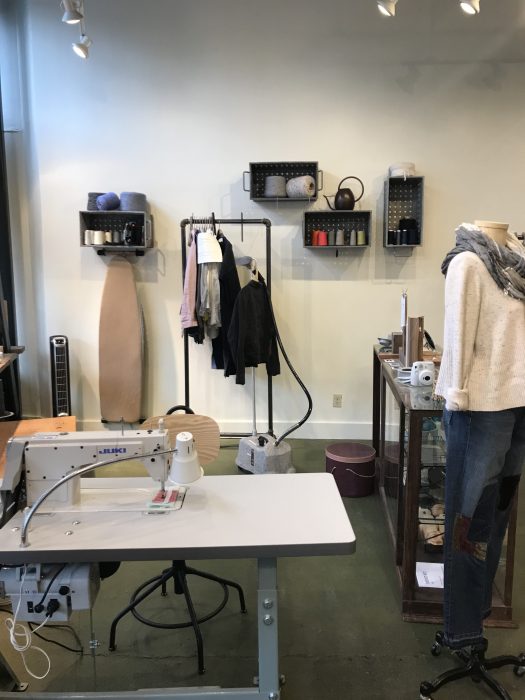
Our Return to the Great Outdoors: On The Road Again
From retail destinations, office amenities, new services, and sustainable design, we’re seeing a surge in the desire to reconnect with the great outdoors across every consumer-facing environment. In our latest series, Our Return to the Great Outdoors we’ll share how brands can embrace this trend to create both safe and memorable outdoor experiences that will resonate with consumers long after COVID-19 fades.
In times of uncertainty, consumer expectations don’t change completely—they simply evolve, pivot, and accelerate, raising the bar and amplifying the demand for new, relevant experiences. A growing trend as consumers gravitate toward more convenient services, road and curbside experiences of all shapes and sizes are becoming more and more essential, especially as COVID-19 pushes brands to offer outdoor and contact-less services. In part two of this series we explore the experiences and services that keep people outside and on the road, in addition we’ll identify what brands are doing to bring this to the forefront of their experiences:
Drive-Thru Only
With a growing number of consumers ordering takeout instead of dining in due to COVID-19, restaurant and food brands have had to adapt to more efficient service models that support new consumer behaviors. Even before the pandemic, we saw an uptick in these convenience focused concepts, but today they have grown even more essential.
- Restaurant table reservation app Resy is hosting a 10-course drive-thru dinner experience in Hollywood, CA. Catered by these high-end chefs, the model could help bringing luxury dining back to life. Guests will be served food in single-use containers and be given a lap tray to keep. Each car will have its own designated waiter who will guide them through the courses.
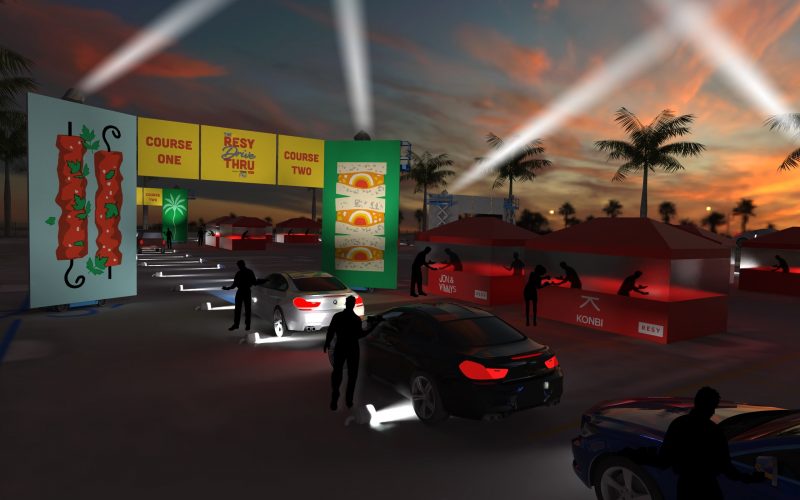
Resy Drive-Thru Experience | RESY
- At KFC’s first drive-thru only concept located in Australia, the goal was to develop a unique operating model that celebrated this change in consumer behavior and gravitation toward technology. The drive-thru has multiple lanes that allow customers to order and pay for a meal through the brand’s smartphone app or website, including designated lanes for more traditional, on-the-spot orders. Traditionally, the restaurant is the hero experience, but in this case, it’s the drive-thru.
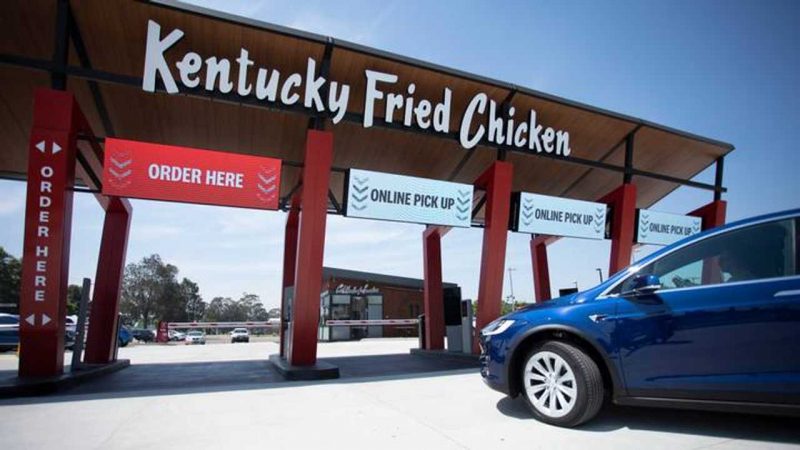
KFC Drive-Thru | NELSON Worldwide
Creative Curbside Pickup
With the rapid growth of e-commerce and a global pandemic causing retail developments to limit capacity or temporarily close, transforming underutilized space into creative pickup and return concepts is a clever and valuable way to meet consumer demands now and in the future:
- Adjusting to safety demands and new consumer behaviors, NELSON Worldwide explored the idea of creative click-and-collect concepts that could serve retailers and mixed-use developments. Along the way, we identified three ways these concepts can be activated and brought to life.
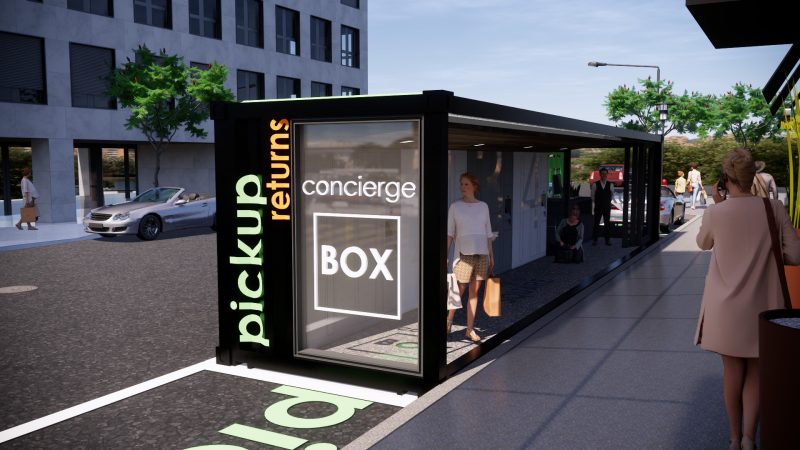
Click-and-Collect | NELSON Worldwide
- Looking to capture more off-premises business during and post-pandemic, Shake Shack announced plans to incorporate and add interior and exterior pickup windows to its stores. The new concept dubbed Shake Track is the start of a trend we will see implemented in restaurants and food concepts around the world.
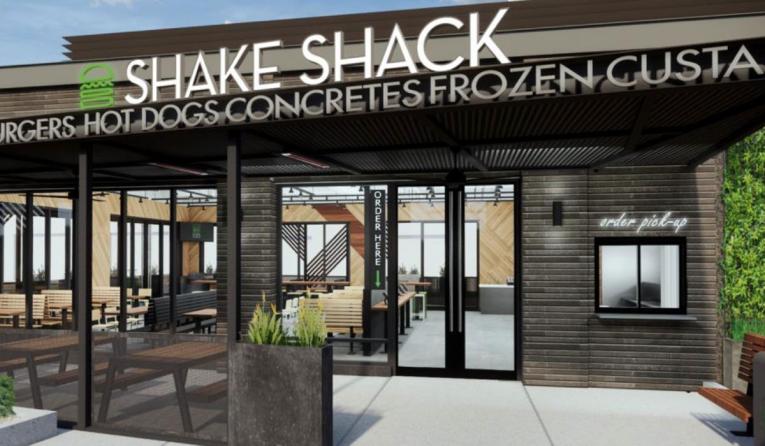
Shake Track Pickup Window | Shake Shack
In-Car Entertainment
Seeking new ways to connect with their communities and enhance their lives post-pandemic, consumers have turned to new, COVID-safe ways to entertain themselves. As a result, an old pastime has resurged giving consumers socially distant options to enjoy themselves. Around the world, many variations of the classic drive-in movie experience has been reimagined:
- This Halloween, Hulu is engaging fans and customers with a socially distant drive-thru and scary movie experience. Hulu is taking over the L.A. Equestrian Center for some spooky screenings ahead of Halloween where guests can drive thru a haunted forest of jump scares and spooky scenery called Huluween.
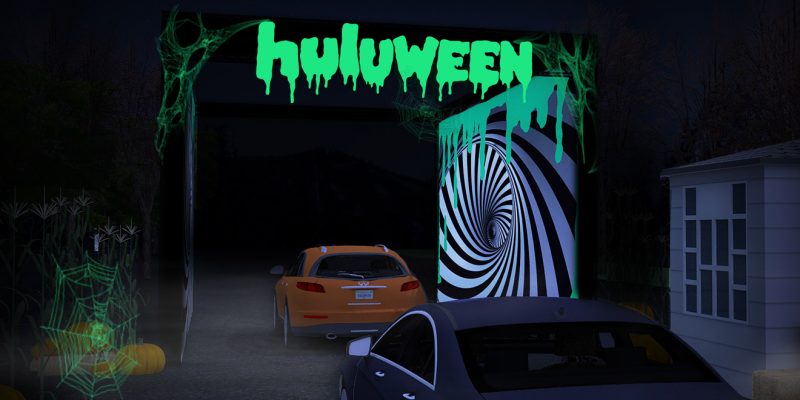
Huluween Drive-In Experience | Hulu
- The Immersive Van Gogh Exhibit in Toronto recently announced the world’s first drive-in art experience. Cleverly called, Gogh By Car, this new-age art experience is an immersive show of art, light, sound, movement, and imagination. The space can accommodate 14 vehicles per time slot and participants must park and turn off their engines to enjoy the 35-minute show from inside their cars.
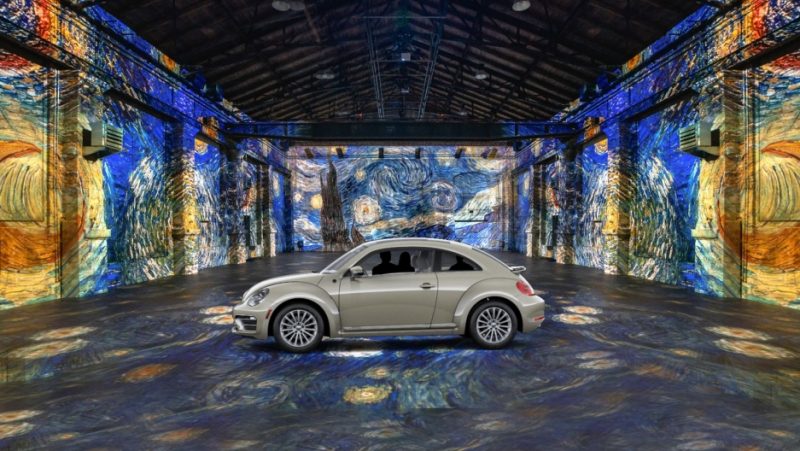
Gogh By Car | Immersive Vincent Van Gogh Exhibit
Evolving Workforce Expectations: How streamlined communication can lead to employee gratification
NELSON Worldwide’s Evolving Workforce Expectations study explores employees’ sentiments about returning to the office, and the impact COVID-19 has had on work environments and employee engagement. As part of our Evolving Workforce Expectations blog series, we’re taking a closer look at each of the key themes that stemmed from our research: communicate, activate, control, and support. Follow along to learn more about each theme and how your brand can pull off a successful re-entry strategy.
The golden rule when it comes to employee communications is typically to over communicate. This is especially true right now, when people are feeling anxious, stressed, generally uneasy, and looking to company leaders to provide answers. Communication is the key to easing frustrations, concerns, and fears associated with the unknown, and our research from the Evolving Workforce Expectations Study proves this.
Returning to the office in person will require transparency in efforts to provide safety, but also a renewed focus on communication of the purpose and mission behind companies. Here’s what you can do to streamline your communication:
Diversify your communication channels
Our survey findings say employees crave multiple touch points of communication, and they’re looking for confidence through conversation. However, that doesn’t mean every employee will absorb the same message in the same channel. Branch out and know that some may respond best to an email message, while others are seeking video calls, snail mail, and even physical signage reminders. No matter if the message is the same, expand your communication channels to drill down your key points. Examples include:
- Email messages, internal social network postings, and even text messages
- Welcome posters, elevator signage, and digital monitors
- Comment cards both digital and physical
- Team meetings and town halls in-person and via Zoom
45% of survey respondents said clear communication regarding what’s been done to ensure their safety and what new procedures have been put in place is extremely important to them.
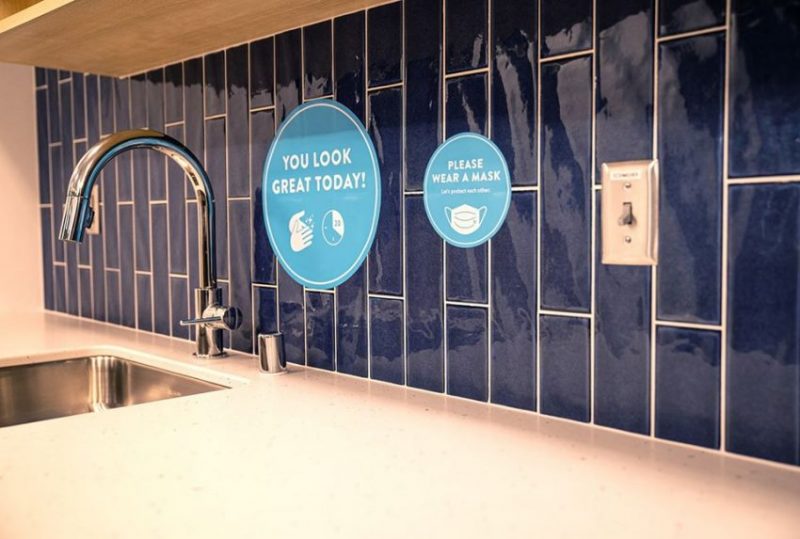
Make the workplace more accessible
With many companies offering employees the choice to return or not, it’s important to make the office more accessible for everyone, no matter what their situation is. Some may want to make frequent visits for heads down work away from distractions at home, and others may only want to come in for important face-to-face meetings. Ways to make the workplace more accessible include:
- Create a sign-up portal for those wanting to enter the office sporadically
- If your company isn’t using one already, consider installing a space management software system to reserve conference and meeting rooms, limit capacity, and more
- Provide training for employees to educate on reducing physical contact while maintaining a connective culture
- Have dedicated IT and operations support teams for both virtual and in-person employees
81% of survey respondents say openness to requests for continued flexible or remote work hours rated extremely to very important when it comes to helping them feel productive, safe, supported, and empowered.
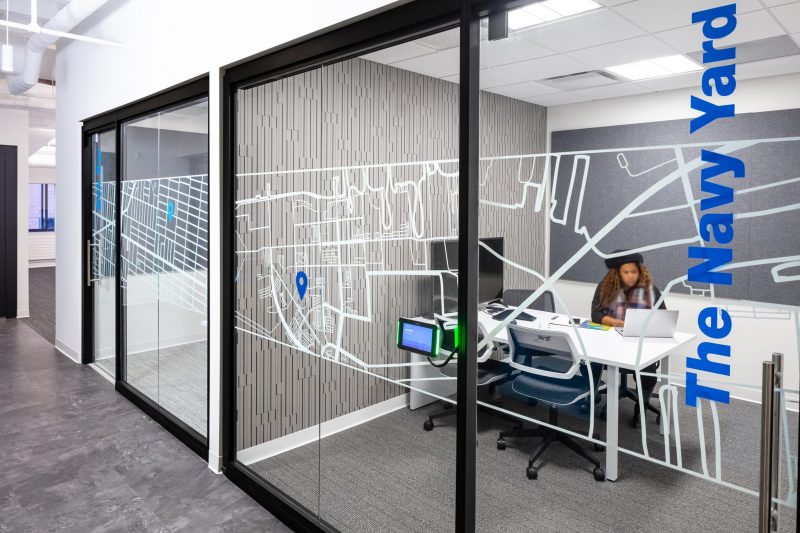
Keep employer brand top of mind
NELSON’s Evolving Workforce Expectations study found that nearly 40% of respondents were worried about being able to continue working for their current company. This tells us that people are connected to their current careers and are seeking reassurance that they can maintain that relationship. Part of that connection is the socialization that happens between teams while onsite. Brand-centric communication can help alleviate some of that concern and sadness. As long as an employee still feels connected to the brand, even if it’s a virtual connection, work satisfaction is elevated. Here is how this can be accomplished:
- Tie communications back to your mission, vision, values, and even services
- Highlight positive messaging that emphasizes a brand’s accountability (i.e. hold the company and employees accountable for washing hands, sanitizing, and wearing masks)
- Provide custom, branded Zoom backgrounds for all to use when communicating with each other and clients
- Brighten up the office by adding a brag wall featuring accomplishments, recognition, and more
54% of survey respondents say teamwork and sociability is important when it comes to a physical office environment.
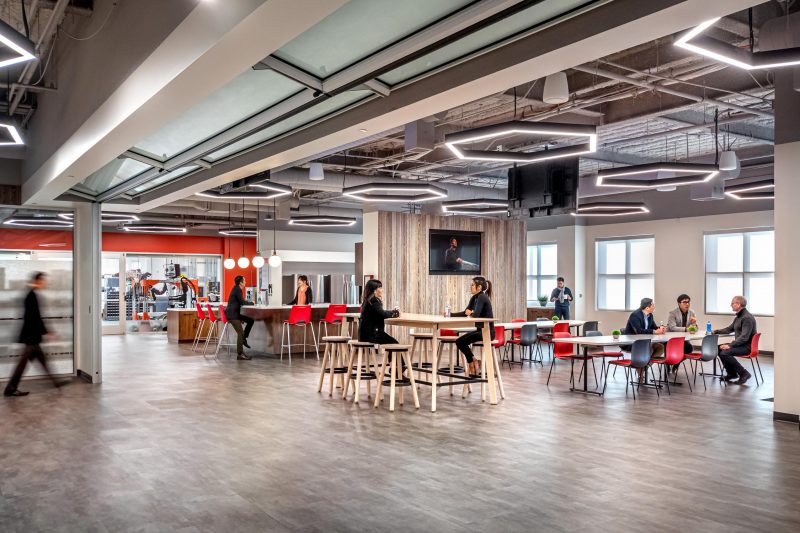
Plan for every step of the way
Employers must think of the re-entry strategy from all angles. Consider the communication before going back, during the process, and after the fact. Simply communicating once will not satisfy the need for reassurance. Overcommunicate through multiple channels at multiple points of time. Create a dialogue where you tell them what they need to know, tell them again, and then remind them of what you’ve already told them one more time. Consider the following tactics:
- Determine a plan for returning and communicate it often before going back
- Assemble a “welcome back kit,” consisting of sanitizers, masks, quick visual guides pertaining to office layout changes, lists of new protocols for quick reference, and more
- Host regular meetings upon the return to the office, giving the opportunity for an open dialog
Return to Work Survey
Evolving Workforce Expectations
Learn more about NELSON Worldwide’s proprietary research study on emerging employee expectations to better determine the impact COVID-19 has had on work environments and employee engagement. We uncover insights that will help drive your re-entry strategy and provide support and context for future decisions.
Meredith Seeds elevated to Senior Director – Retail Practice Studio Leader
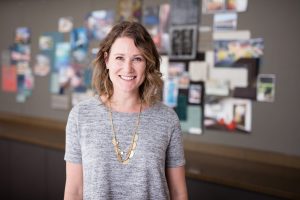
Meredith Seeds has been promoted to Senior Director – Retail Practice Studio. She has the unique ability to convert client objectives and strategies into captivating stories and transformative human experiences using a consistent strategic approach of design excellence, consumer insights, collaboration, and simply asking, “Why not!” or “What if!” She has been a valued partner and a kindred whole-brained thinker to Retail National Practice Leader Bevan Bloemendaal as they’ve worked side-by-side for the past seven months to surpass client expectations with creative, relevant, and disruptive solutions.
Meredith will lead, inspire, and mentor the NELSON Retail Practice Design Leadership team, which includes Louis Chang (Restaurants/Bars/Airports), Marco Oppici (Department Stores/Luxury), Michelle Isroff (Lifestyle/Wellness), Phil Otto (Cultural Anthropologist), and a TBH Lifestyle Design Leader, along with their respective teams in living our NELSON purpose.
To colleagues and clients alike, Meredith exudes a sense of camaraderie, joy, and happiness creating an atmosphere of positivity, creativity, and laughter, truly living her truth and best self in all she does.
Maximizing Profit Per Square Foot: How Smart Design Unlocks Value in Student Housing
Student housing is at a crossroads, with growing demand and rising expectations from students and universities alike. The difference between a property that thrives and one that falls short often hinges on the strategic decisions made during the design phase. Smart design isn’t just about aesthetics — it’s about creating spaces that maximize profitability while meeting the expectations of students, parents, and universities.
NELSON Worldwide specializes in designing housing developments that balance profitability, market demand, and resident satisfaction. Here’s how innovative design transforms underperforming layouts into thriving, revenue-generating communities.
Efficiency Equals Profitability
In student housing, every square foot matters. The goal is to achieve more from less — more functional living areas, more communal spaces, and more flexibility in the same footprint. Efficient layouts prioritize density without sacrificing livability, ensuring spaces meet the needs of residents while generating maximum revenue. Shared kitchens, multi-use common areas, and modular unit designs are just a few examples of how smart planning can transform square footage into tangible value.
At Middle Georgia State University (MGA), NELSON developed programming and conceptual design services for a three-story, 310-bed student housing facility. The design maximized views of the campus lake and included private and shared two-bedroom, one-bath units, along with student life spaces for studying, gathering, and collaboration. The exterior was designed to complement the campus aesthetic while supporting the university’s strategic and master plan goals. This efficient use of space and thoughtful planning demonstrates how smart design creates a balance between functionality and student satisfaction.
When units and shared amenities are designed with intentionality, developers can reduce wasted space, optimize operations, and increase revenue per square foot.
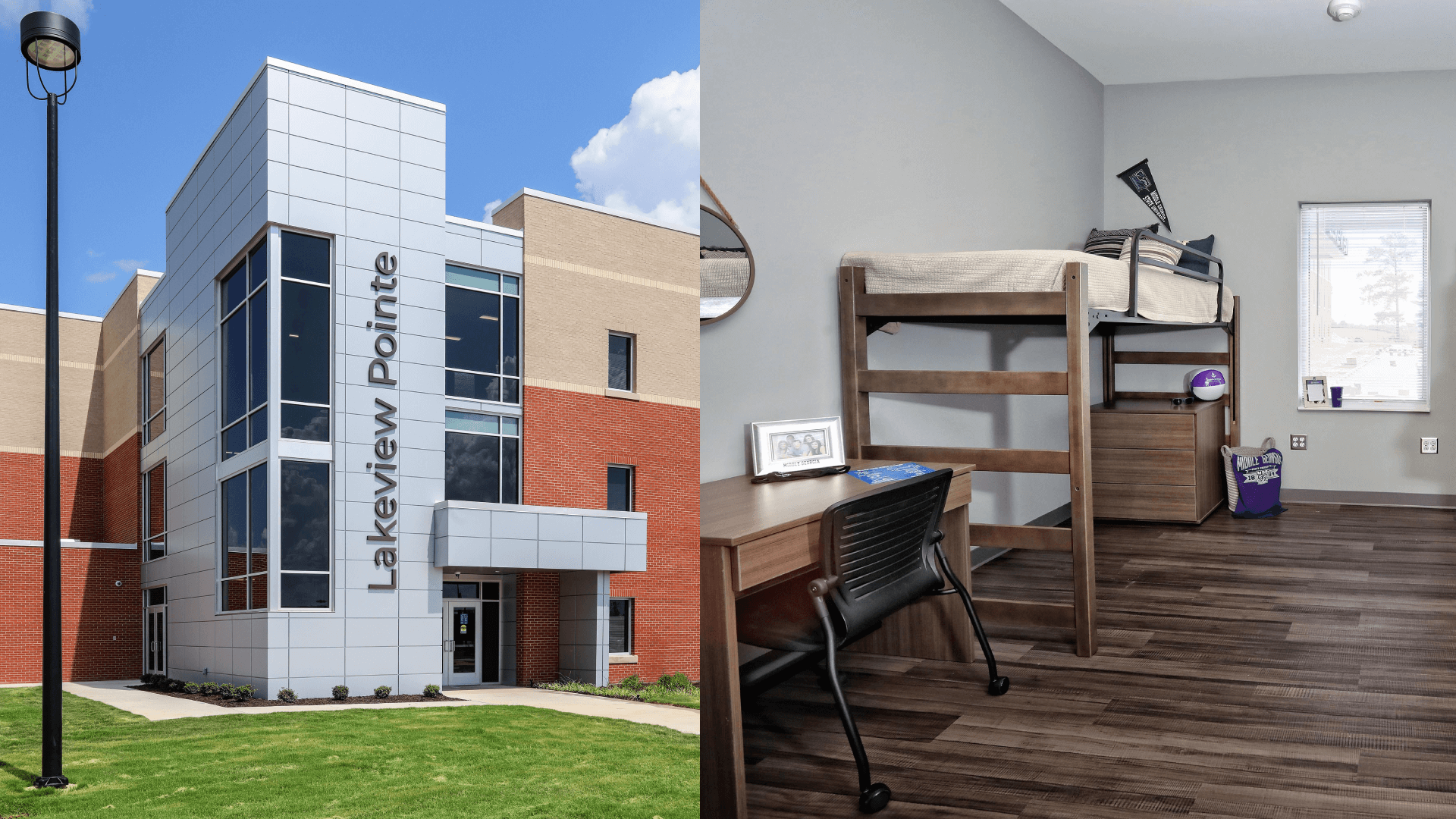
Amenities That Work for Students
Amenities are no longer an afterthought in student housing — they are essential for attracting residents and staying competitive in a crowded market. Spaces that support academic success, wellness, and community-building are key. Co-working lounges, fitness centers, and vibrant outdoor spaces can help foster connection and enhance the overall resident experience.
At 3720 Chestnut Street, a Fitwel-certified, 30-story mixed-use residential tower in University City, Philadelphia, NELSON Worldwide served as Architect of Record, collaborating with Design Architect SITIO. The project includes 420 apartments tailored for graduate students, with “Smart” living units designed to meet their needs. The development also features 4,000 square feet of retail space, underground parking for 40 vehicles, and storage for 142 bicycles. This mix of smart unit designs and comprehensive amenity spaces supports both academic success and urban living.
Well-designed, multi-functional spaces aren’t just beneficial for students; they are also strategic investments for developers, improving lease renewal rates, retention, and overall profitability.
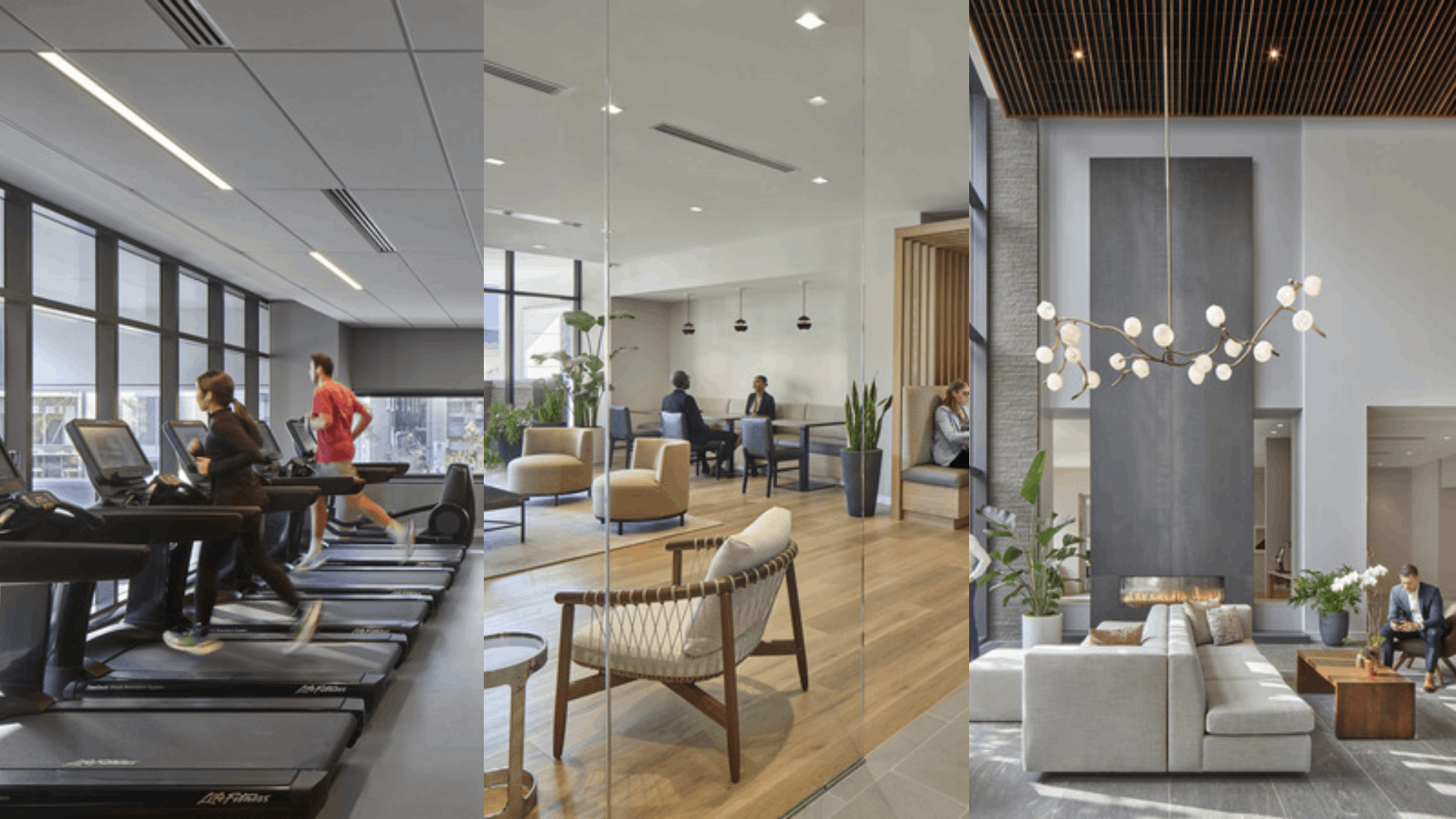
Adapting to Market Realities
Student housing developments must adapt to a variety of market demands, from urban campuses to sprawling suburban universities. Flexible designs that address diverse housing typologies, including high-density living near urban campuses or garden-style housing for suburban schools, are critical for success.
It’s also a reality that sustainability is an expectation these days, and it goes beyond simply reducing a building’s carbon footprint. Features such as energy-efficient systems, water-saving technologies, and sustainable material choices can lower operational costs while appealing to eco-conscious students and their families. Smart design anticipates these needs, integrating green infrastructure that future-proofs properties and contributes to long-term operational efficiency.
Understanding the needs of students, universities, and communities — whether that’s collaborative study areas, secure bike storage, easy commute to job opportunities or entertainment options, green infrastructure or proximity to campus amenities — all of these features ensure housing remains competitive and desirable.
Learning from Multifamily Trends
Student housing can draw valuable lessons from the broader multifamily market, where creative solutions and cutting-edge designs have been successfully implemented to attract diverse tenants. For example, Broadridge Philly Apartments, designed by NELSON Worldwide. This property is one of the most amenity-driven residential properties in Philadelphia, and it demonstrates how innovative amenities and community-focused planning can transform residential spaces.
Located in one of the nation’s fastest-growing residential markets, Broadridge was designed to appeal to a broad renter base by offering uniquely crafted units and an impressive array of modern amenities. These include private pods and breakout conference rooms for remote workers, as well as podcasting booths for the increasing number of content creators. Beyond individual features, the project transformed a former food desert into a thriving cultural hub, benefiting both its residents and the surrounding neighborhood.
This type of approach showcases how thoughtful design can meet modern demands while fostering vibrant, inclusive communities. By adopting similar strategies, student housing developers can integrate cutting-edge features and community-focused design to meet evolving expectations and drive profitability.

The Bottom Line: Design That Delivers Results
Maximizing profit per square foot in student housing requires strategic, intentional design choices. By optimizing layouts, leveraging community-driven amenities, and integrating sustainable features, developers and universities can create housing that meets market expectations while achieving long-term financial success.
NELSON Worldwide’s expertise demonstrates how thoughtful design transforms student housing developments into thriving communities that deliver value to both residents and stakeholders.